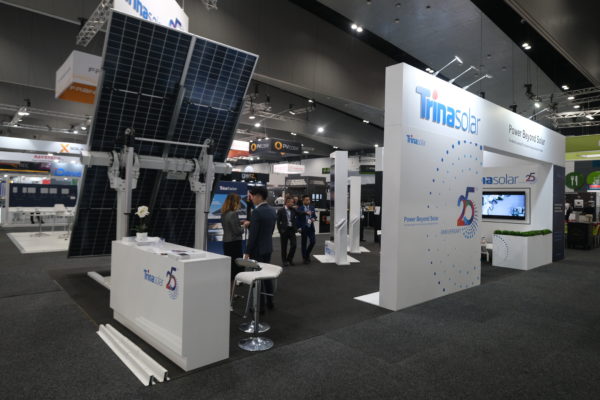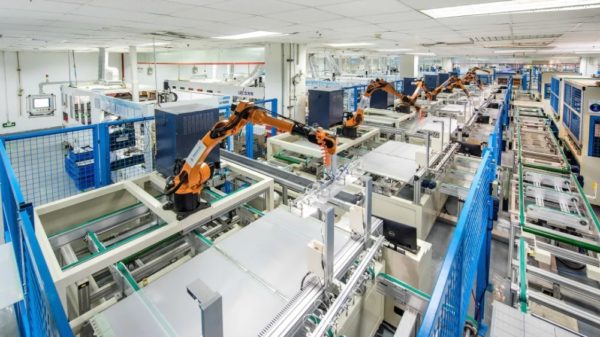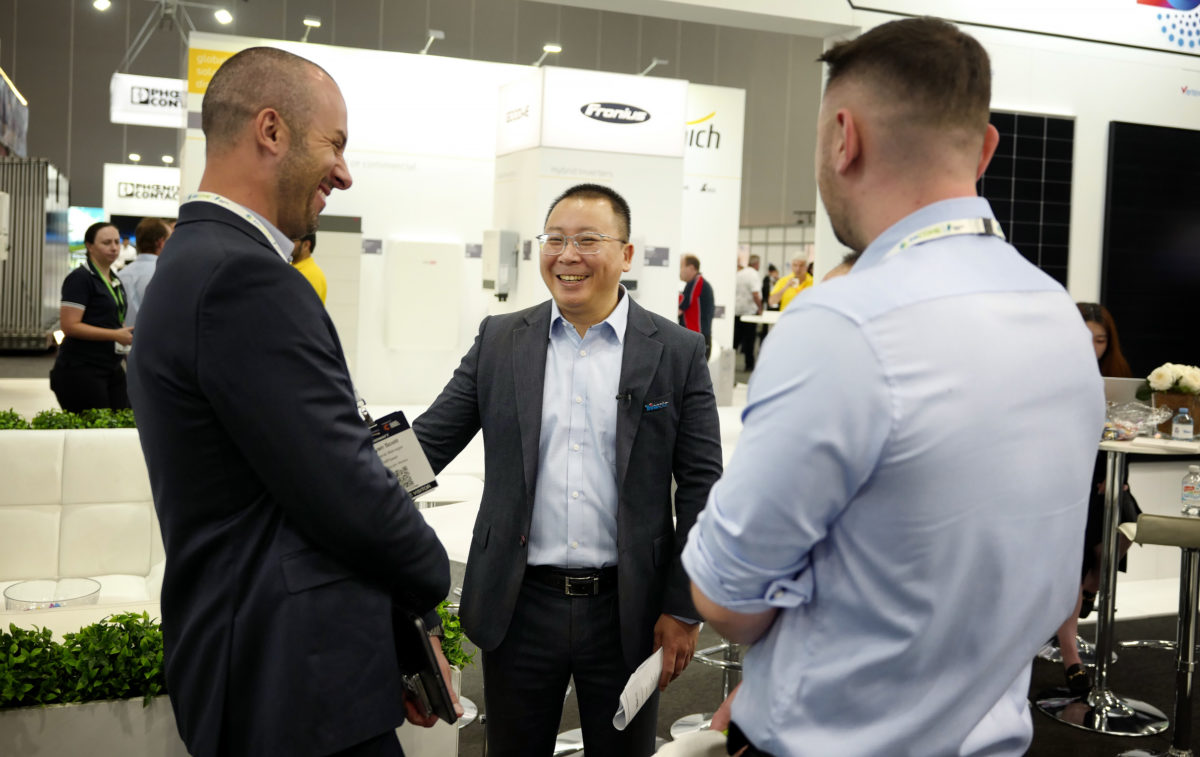Twenty-five is a deeply significant number for Todd Li, President of Trina Solar, Asia Pacific. He tells the story of how some years ago a customer challenged him saying, “You are selling me a product and offering me 25 years warranty, but your company is not even 25 years old, so how can you know the product will be around for that long? And also how can you guarantee your company will be with us for 25 years?”
At the CEC All-Energy conference and exhibition in Melbourne this week, Trina Solar celebrated 25 years in business with a rooftop party overlooking the city. Li was proud to remind 160 attendees that Trina could also toast having broken 25 world solar efficiency records, averaging one such milestone every year, since its inception.
The latest record was claimed on August 24 when Trina Solar announced that its Vertex high-efficiency monocrystalline silicon module, based on 210mm high-efficiency n-type i-TOPCon cells, had achieved aperture module efficiency of 24.24%.
In a difficult global market challenged by supply chain issues, rising costs and constraints on resources, Li said he was also “quite proud” when he heard that the Warwick Johnston’s influential SunWiz report had “ranked Trina Sola as number one in Australia in terms of the shipment volumes of solar panels last year.” According to SunWiz, Trina currently holds the highest market share for solar panels in Australia.
The volume of installations and orders has been “the main reason,” says Li, “for us to increase the workforce here.” Trina recently doubled its sales, administrative, engineering and after-sales team in Australia from six to 12.
New releases seek to solve a multitude of concerns
At All-Energy, in the shadow of Trina’s new enormous Vanguard 1P tracker which held aloft a carport-size solar panel, Li extolled the virtues of new modules introduced to Australia this week, including the Vertex DE19R, and Vertex N NEG19RC.20 for the small and large-scale utility segments.
“The R series in particular features our unique technology,” he says: Trina’s reshaping of solar cells from square shapes to a more rectangular form has increased the power output of these modules. At the same time, says Li, it “makes the solar panels slightly longer, but narrower, so they’re easier for installations and for carrying”. An additional bonus of the reconfiguration is that more panels can be packed into each shipping container at a time when transportation costs are at a premium.
“The main purpose nowadays,” says Li, goes beyond the power output of the panels. “It’s more about the LCOE savings at the system level. We’re moving to solutions-based ideas instead of purely module manufacturing.”
In the near future he says, Trina Storage will be added to Trina Solar and TrinaTracker in the Australian market, with energy storage solutions for both large scale and residential applications.

Image: Trina Solar
Vanguard 1P tracker lifts solar farm output
In the meantime the Atlas-like Vanguard 1P demonstrates Trina’s commitment to integrated solutions. The only panel manufacturer to also produce trackers, Trina has refined the integration and grown the range of trackers since it purchased Spanish tracker maker, Nclave two years ago.
Trina is claiming energy yield improvements of up to 15% from the deployment of Vanguard 1P trackers, which have been designed to perform in challenging conditions, including high winds.
Controlling variables by providing complete solutions has also become an imperative on the manufacturing front, where Trina is seeking to manage global supply chain issues. Its new industrial park, currently under development in Xining, the capital of China’s Qinghai province will span virtually the whole PV manufacturing chain from poly silicon production to completed modules based on 210 and n-type technology.

Image: Trina Solar

Image: Trina Solar
The first phase of this industrial complex is expected to be completed by the end of next year, when it will begin delivering an annual 300,000 tonnes of high-purity silicon; 35 GW of mono silicon; 10 GW of wafer slices; 10 GW of cells and 10GW of modules to an global market seeking to accelerate decarbonisation with renewable energies.
Li says Trina Solar is involved in discussions with a number of green hydrogen project developers to provide reliable solar energy supply with record-breaking efficiency.
This content is protected by copyright and may not be reused. If you want to cooperate with us and would like to reuse some of our content, please contact: editors@pv-magazine.com.









By submitting this form you agree to pv magazine using your data for the purposes of publishing your comment.
Your personal data will only be disclosed or otherwise transmitted to third parties for the purposes of spam filtering or if this is necessary for technical maintenance of the website. Any other transfer to third parties will not take place unless this is justified on the basis of applicable data protection regulations or if pv magazine is legally obliged to do so.
You may revoke this consent at any time with effect for the future, in which case your personal data will be deleted immediately. Otherwise, your data will be deleted if pv magazine has processed your request or the purpose of data storage is fulfilled.
Further information on data privacy can be found in our Data Protection Policy.